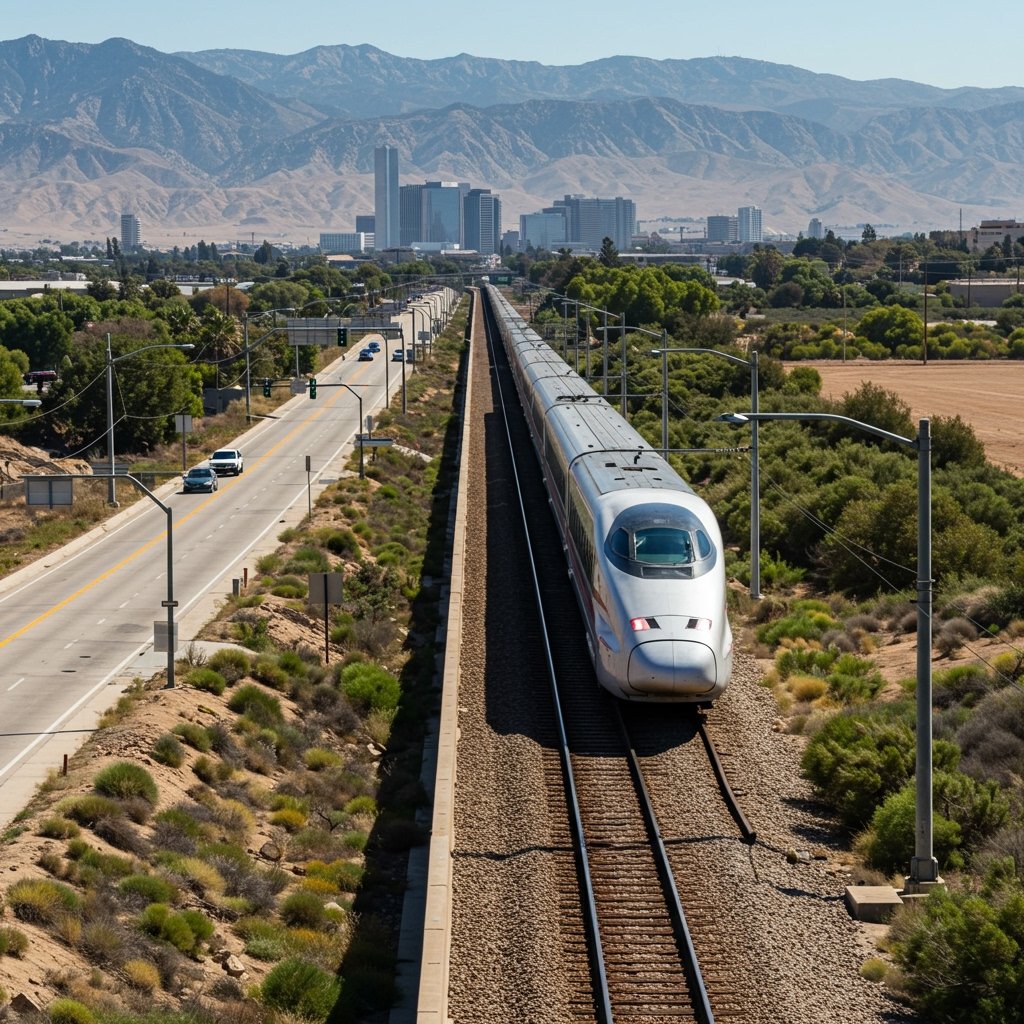California High-Speed Rail Targets March 2025 for Historic Central Valley Launch
The California High-Speed Rail Authority has officially reaffirmed its target date of March 2025 to commence initial passenger service on the 171-mile segment spanning between Bakersfield and Merced. This declaration represents a pivotal moment for the ambitious infrastructure project, positioning it to become the first operational high-speed rail line in the United States. The Authority’s confirmation provides a concrete timeline for a significant milestone that has been years in the making, signaling tangible progress towards transforming intercity travel in California.
This segment, located within the state’s agricultural heartland, the Central Valley, is designated as the foundational phase of the broader network. Its planned operational debut in early 2025 is more than just a local service launch; it is poised to demonstrate the viability and functionality of high-speed rail technology on American soil. For decades, nations across Europe and Asia have utilized high-speed rail networks to connect major cities, reduce travel times, and offer a sustainable alternative to air and road travel. California’s project aims to bring these benefits to the U.S., starting with this crucial inland link.
The 171-mile route connects the key Central Valley cities of Bakersfield to the south and Merced to the north. This corridor is not merely a straight stretch of track; it incorporates complex engineering infrastructure necessary for high-speed operation. Along this segment, construction has involved building numerous structures designed to ensure smooth and rapid transit. The Authority confirms the route includes 35 structures, which comprise vital elements such as viaducts and bridges. These structures are essential for navigating varied terrain, crossing existing roads and waterways, and maintaining the precise alignment required for trains traveling at high velocities. The completion and successful integration of these structures are critical precursors to launching service.
Currently, a vital phase of the project is testing underway along this completed stretch of infrastructure. This comprehensive testing regimen involves putting trains through rigorous trials on the tracks, evaluating their performance, safety systems, and compatibility with the newly installed power and signaling infrastructure. Testing at increasing speeds is a mandatory step to validate that every component of the system — from the rails and power supply to the train’s brakes and communication systems — functions flawlessly and safely under operational conditions. This stage is meticulous and time-consuming, involving multiple runs to collect data and fine-tune performance parameters before passengers can be welcomed aboard.
Officials from the California High-Speed Rail Authority have emphasized that this testing phase is vital for demonstrating the system’s readiness. It is not merely a procedural step but a critical opportunity to prove the operational capability and safety standards of the infrastructure and rolling stock. Successfully passing these tests provides the necessary certification and assurance that the segment is prepared for public service. This demonstration of readiness is crucial not only for regulatory approval but also for building public confidence in the safety and reliability of the nation’s inaugural high-speed line.
Furthermore, the Authority views the March 2025 operational target for the Bakersfield-Merced segment as laying a foundation for future extensions. While this initial line connects two Central Valley cities, the ultimate vision for the California High-Speed Rail project is to link the state’s major economic and population centers. The experience gained from building, testing, and operating this first segment will provide invaluable knowledge and expertise that will inform and accelerate the construction and deployment of subsequent phases. This phased approach allows the Authority to build incrementally, demonstrate success, and refine processes before tackling the more complex and expensive segments planned for the metropolitan areas.
The long-term plan includes extending the high-speed network towards San Francisco in the north and towards Los Angeles and Southern California in the south. These future phases involve navigating challenging urban environments, mountainous terrain, and extensive existing infrastructure, requiring significant engineering feats and logistical coordination. The 171-mile operational segment in the Central Valley serves as a tangible proof-of-concept and a operational core that can be expanded upon. It provides the necessary operational experience and validates the technology and construction methods employed, creating a blueprint for the ambitious extensions.
Initiating service in the Central Valley in March 2025 is expected to bring tangible benefits to the region. It will offer residents a faster, more convenient, and potentially more affordable travel option between these cities compared to driving. Improved connectivity can foster economic opportunities, facilitate commuting, and enhance access to services and education along the corridor. As the first operational high-speed line in the United States, its performance in the Central Valley will be closely watched nationally and internationally, serving as a potential model for future high-speed rail development elsewhere in the country.
While the project has faced various challenges throughout its development, including funding complexities, environmental reviews, and land acquisition processes, the confirmation of the March 2025 target date for operational service on the Bakersfield-Merced segment underscores the Authority’s commitment and the tangible progress made on the ground. The focus is now firmly on completing the rigorous testing phase and preparing for the historic launch.
In conclusion, the California High-Speed Rail Authority’s reaffirmation of the March 2025 target for service commencement on the 171-mile Bakersfield-Merced segment marks a critical inflection point. With testing underway on infrastructure including 35 structures like viaducts and bridges, this phase is deemed vital for demonstrating the system’s readiness. This operational segment is set to become the first operational high-speed line in the United States, providing a crucial foundation for future extensions towards San Francisco and Los Angeles. The confirmed timeline brings the prospect of high-speed rail travel in the U.S. closer to reality, beginning in the heart of California.


















